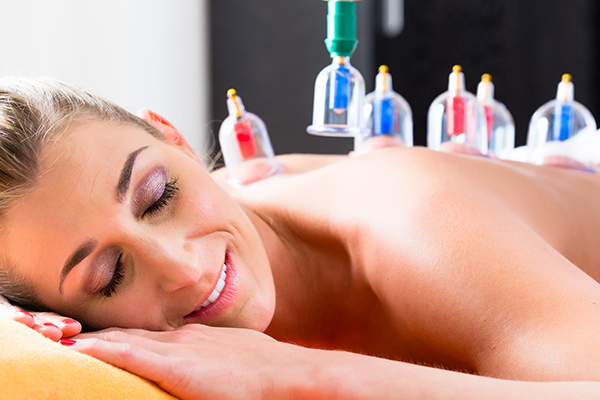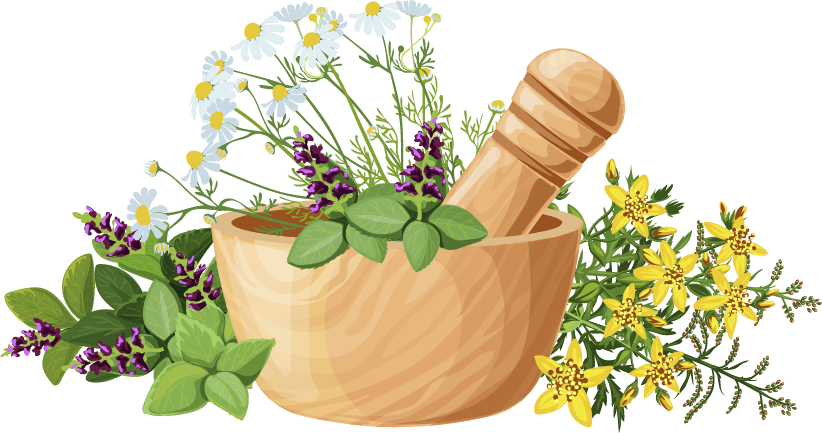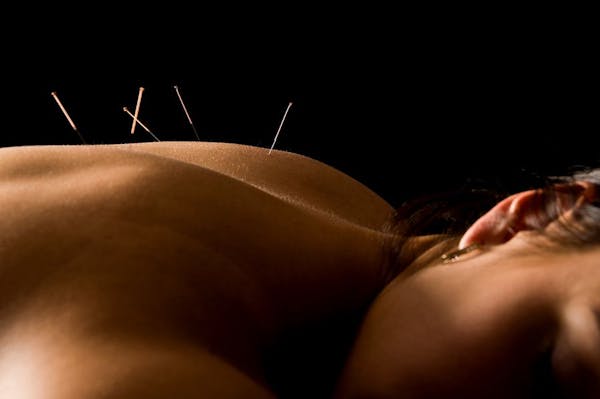-
Acupuncture
Acupuncture and Traditional Chinese Medicine (TCM) is a holistic, multidisciplinary healing science with a history and tradition dating back over 5000 years. Acupuncture is a key component within the scope of Chinese Medicine and works on restoring the flow of energy in the body by stimulating points along energetic pathways called Meridians. Chinese medicine views disease as a state that develops when this flow of energy is in disharmony. Acupuncture stimulates the body's self-healing capacity by restoring the flow of energy to a state of equilibrium. During a treatment, extremely thin needles are inserted into specific points on the body to mobilize energy (Qi) and achieve a therapeutic effect. Patients often experience a dull-achy or tingling sensation when the needles are inserted. This is considered as the Arrival of Qi (energy) to the acupoint and thus, therapeutic. Acupuncture meridians are pathways that traverse the body similar to nervous system pathways. Modern research indicates that the stimulation of acupuncture points can affect the nervous, endocrine, circulatory, and immune systems. Therefore, acupuncture has the capacity to transform the human system at a constitutional level. Acupuncture and Chinese Medicine is a holistic approach to health and wellbeing and each treatment is tailored to address each patient's unique health concerns. An acupuncture treatment may also include other therapeutic modalities such as acupuncture with cupping, Gua Sha or reference to massage therapy. -

Korean Acupuncture Nei Jing Style
Cross Imbalance
The Huangdi Neijing is often referred to as the Acupuncturist's Bible and is "an ancient treatise on health and disease said to have been written by the famous Chinese emperor Huangdi around 2600 BC. However, Huangdi is a semi-mythical figure, and the book probably dates from later, around 300 BC and may be a compilation of the writings of several authors." (Curran, J. 2008) What I know more about our modern times is that my Mentor Dr. Jaehoon Kim studied the following among the Neijing, Nanjing, and other Korean sources to fully create Korean Acupuncture Nei Jing Style that includes three & five needle technique, which is a style my husband and I amongst few others are practicing here in the United States. Dr. Kim used to always say: "I am a Pulse Master, and you must become one too". He had over thirty years experience of researching the classics where he mastered Sa Am Chim (four needle technique), Korean hand acupuncture and Hwa Chim (Five Element harmonizing). Throughout the years, he was developing the three-needle technique based on the Nei Jing Ling Shu, which eventually developed into the three/five-needle technique. The current style has many aspects within it and a practitioner must be trained in Yin Yang pulse reading, Zang Fu pulse reading, and Six Energies pulse reading as a basis of the system. All of which are unique to the system. Dr. Kim also stated that there are thousands of diseases, complaints, and symptoms, yet only one source for them all: Imbalance. Accordingly, this system is all about achieving balance which allows patients to enter their "Healing Zone," where the body's own recovery power is switched on. "What lies behind us and what lies before us are tiny matters compared to what lies within us." R.W. Emerson This eccentric Quote was one of Dr. Jaehoon Kim's favorites. He shared it with his students as he often did with other quotes as well. I particularly like this quote because it especially refers to the huge amount of stamina and recovery power our human bodies have within us, when we become inspired to find balance and when the spirit is inspired to find its way back into balance, anything is possible, miracles can happen. I was Dr. Jaehoon Kim's clinical intern for six months at Emperor's College Clinic. For two years after that, I continued to work and learn from him as his personal clinical assistant. Without a doubt, I had the privilege to learn straight from the best. Dr. Kim passed away in 2017. After that few other students and I are now going to be the ones responsible for carrying on this unique needling technique. We will take the responsibility to make sure this method will not disappear but instead gets even more invigorated over time. Our Korean Acupuncture Nei Jing student body, KAN, is expected to one day get together and write a book based on Dr. Kim's notes and clinical case studies. Let's look deeper into one component within the Yin Yang pulse diagnosis called Cross Imbalance. In the Yin Yang system, there are 12 different ways to analyze and diagnose Yin and Yang pulses by measuring the pulse from the carotid (St9) and radial (Lu9) pulses. Comparing these two pulses with each other will define which imbalance is in question. At times there will be patients whose pulses will show the whole right side of the body having Yang bigger and the left side of the body showing Yin bigger or vice versa. This specific imbalance of the Yin Yang pulses is called a Cross Imbalance and it shows that the energies are running across the body forming a cross figure in the middle. Cross Imbalances can arise in any patient but are often seen in patients with symptoms such as chronic or acute low back pain, scoliosis, migraines, weakened immunity, muscular dystrophy, or even other severe one-sided issues like stroke patients, cluster headaches, and acute musculoskeletal traumas. For years, Dr. Kim used to treat the Cross Imbalance by using only the Four Gates (LI4 & Lv3), tonifying or sedating according to the pulse condition. LI4 represents Yang and is tonified on the side where Yin is bigger. Lv3 represents Yin and is tonified on the side where Yang is bigger. If the Cross Imbalance has not been corrected after the first two needles, then the treatment continues by sedating Lv3 on the side where Yin is bigger and sedating LI4 on the side where Yang is bigger. In order to change the pulse, the needling is performed with a specific technique and point location. However, sometime before Dr. Kim passed away, he developed a needling method that adds two Yin tonification Yuan source points on the side of the body where Yang is stronger and two Yang tonifying Yuan Source points on the side of the body where Yin is stronger. This further differentiates the Cross Imbalance diagnosis into Type 1 and Type 2. After the Cross Imbalance has been corrected, the next step is to check the Zang Fu pulses from the positions of Cun, Guan and Chi, which level and strength will determine the next set of needles that are inserted accordingly, but that is a topic for another discussion. This method works so well that when I get patients several times a week who have developed a Cross Imbalance condition, their bodies are able to find the balance without exception. The pulse always changes and most of the time the pulse is corrected only with Four Gates. What may happen at times is that when both sides are needled and there are 8 needles altogether, the body may show a difference between the strength of the yin versus yang. And it's possible that another set of 3-5 needles needs to be added to balance that out. Most of the time though it won't happen. And if it were to happen, it must be taken into consideration how many times the patient has already been getting treatments. If it were to be the first session, then balancing only Yin and Yang, and straightening out the energies should be the only goal. If the patent is familiar with acupuncture more needles can be inserted to achieve the ideal. At times, the pulse does not always become perfectly balanced and it may take several treatments to harmonize Yin and Yang. The ability for the body to be able to change completely with each treatment is a matter of the patient's own body, stamina, and recovery power. What to look for, is a change in the pulse toward being more balanced. Pulses specifically either are able to balance the person all the way or somewhat. If any change, even a small one, occurs during the treatment that means that body has entered into the "healing zone", which is the whole purpose of the treatment. This healing zone will then last about 48-72 hours just like the initial effects of acupuncture normally do. I need to continue redefining and fine-tuning my style of needling on a daily basis, with each patient I meet. Dr. Jaehoon Kim and his Nei Jing needling technique will live through me, with each patient I meet. One day I hope to be able to teach KAN style courses with my husband about this subject. By any means I am not an expert in this style, nonetheless, I am one of a kind basing my acupuncture practice in this unique style and technique of Acupuncture, by doing so, bringing together the Nei Jing's ancient wisdom, and perhaps even channeled knowledge along with Dr. Jehoon Kim's teachings combined with some fruits and blooms from my own intuition, ensuring that every patient of mine is treated with a personalized formula to help them enter their healing zone, restoring the balance back into their human system thus lightning the way toward their optimal health. References:- Wang, B. (2005). Yellow Emperor's Canon of Internal Medicine. (L. Wu, Q. Wu, Trans.).
- Curran, J. 2008. The Yellow Emperor's Classic of Internal Medicine.
- PubMed https://www.ncbi.nlm.nih.gov/pmc/articles/PMC2287209/
-

What is cupping & how does it work?
Cupping, or 'fire-cupping' as it is often called, is a treatment modality in which a vacuum is created in glass cups by quickly inserting fire into the cup to remove oxygen, thus creating a vacuum. The glass cup is then quickly placed on the patient's exposed skin. The vacuum creates suction, which pulls the skin up into the cup, opens the pores, and stimulates the flow of Qi (energy) and blood to the area. This suction helps increase circulation, break up stagnant blood, and create an avenue to pull toxins and pathogens out of the body. The cups are either placed stationary or used in conjunction with a lubricant oil to slide them to increase the area of therapeutic exposure. -

What Is Gua Sha & How Does It Work?
Gua Sha, also known as 'scraping', is one of the many modalities utilized in TCM. It is translated as Gua (scraping) and Sha (red sand), which indicates the tiny red petechiae that form on the skin during the treatment. Typically, the Gua Sha instrument is made of smooth ceramic, jade, or bone and is used in conjunction with massage lotion or other lubricants to help reduce friction along the surface of the skin. The instrument is used to scrape the skin until petechiae, or redness (Sha) develops, thus achieving the therapeutic effect. The redness is unlike bruising, as it does not rupture the capillaries, rather the redness indicates extravasation of blood into the subcutaneous region (the layer of connective tissue between the skin and the fascia) and is considered therapeutic. Like cupping, the redness will disappear within a few days to a week. Research indicates that Gua Sha increases blood circulation, range of motion, and immune function while decreasing muscle pain and inflammation. -

Herbal Medicine
Dr. Katja emphasizes the use of herbal medicine as an integral component of her treatment plans. Herbs are safe, powerful, and time-tested tools to improve your health and speed the process of recovery from illness and dis-ease. Chinese Herbal Medicine is unique in that it utilizes herbal formulas consisting of various herbs that synergistically work together to address each patient's specific health concern. We use only the highest quality herbal suppliers who operate in accordance with Good Manufacturing Practices (GMP). All herbs are quality tested to ensure proper species authentication, as well as to identify any contamination from adulterants, such as heavy metals, sulfur dioxide, aflatoxin, and pesticides. Herbal remedies are available in various forms and we will decide which is best for you according to your condition, lifestyle, and individual needs. Dr. Katja is providing Acupuncture and Herbal Medicine, nutrition, Holistic health and wellbeing, meditation, and breathing instructions in order to address a wide range of health concerns including but not limited to the following:- Orthopedics and Pain Management
- Autoimmune Diseases
- Digestive Disorders
- Aches and Pains
- Addiction
- Diabetes
- Neuropathy
- Headaches and Migraines
- Hypertension
- Trigeminal Neuralgia
- Bell's Palsy
- Adjunctive Cancer Care
- Sleep Disorders
- Mental/Emotional Disorders
- Stress, Anxiety, Depression
- Women's Health Issues
- Common Colds and Flu
-
Pricing
Acupuncture (with privacy curtain)
- Evaluation + Initial treatment: $100
- Follow up treatment: $70
Acupuncture (in private room)
- Evaluation + Initial treatment: $150
- Follow up treatment: $120
Cupping $70
- $5 discount when combined with acupuncture treatment
Holistic Facial & Neck Micro/Nanoneedling Rejuvenation treatment $699
- Also includes Red Light & Infrared Chakra Stone Therapy
Red Light Rejuvenation & Infrared Chakra Stone Therapy $65.00
- Pack of 6: $290 (save $100!)
- Pack of 12: $550 (save $230!)
Herbal/Nutrition Consultation (price varies)
- By phone/video in the comfort of your home

